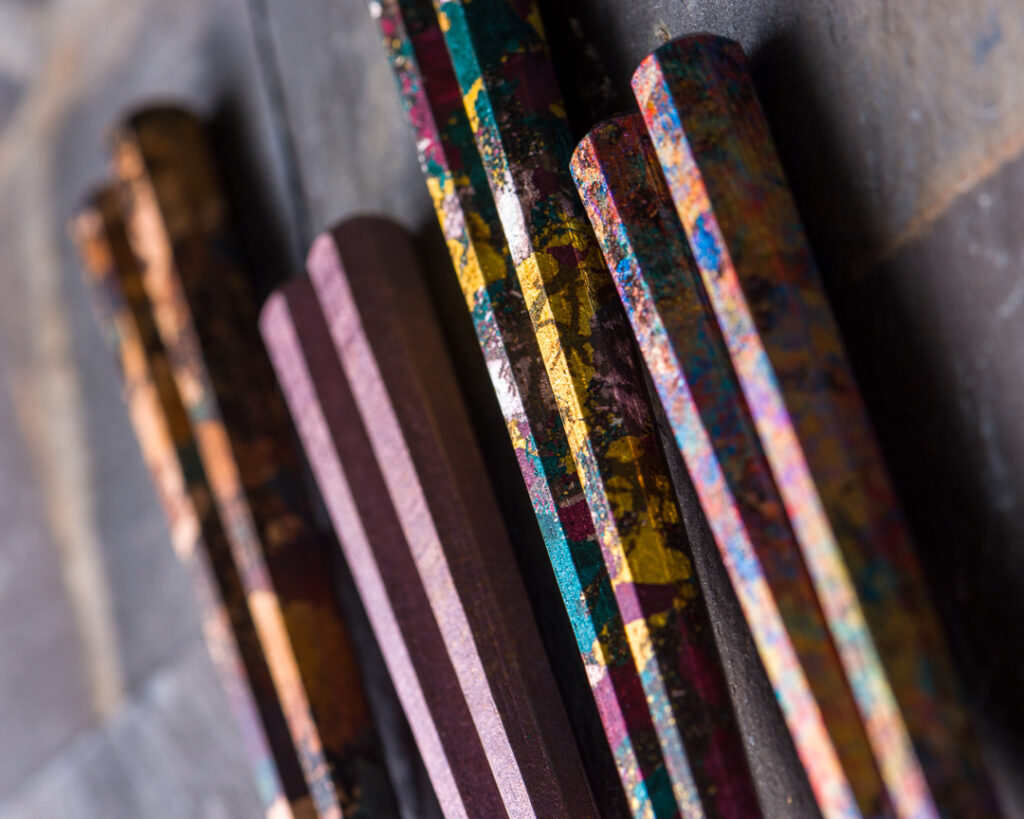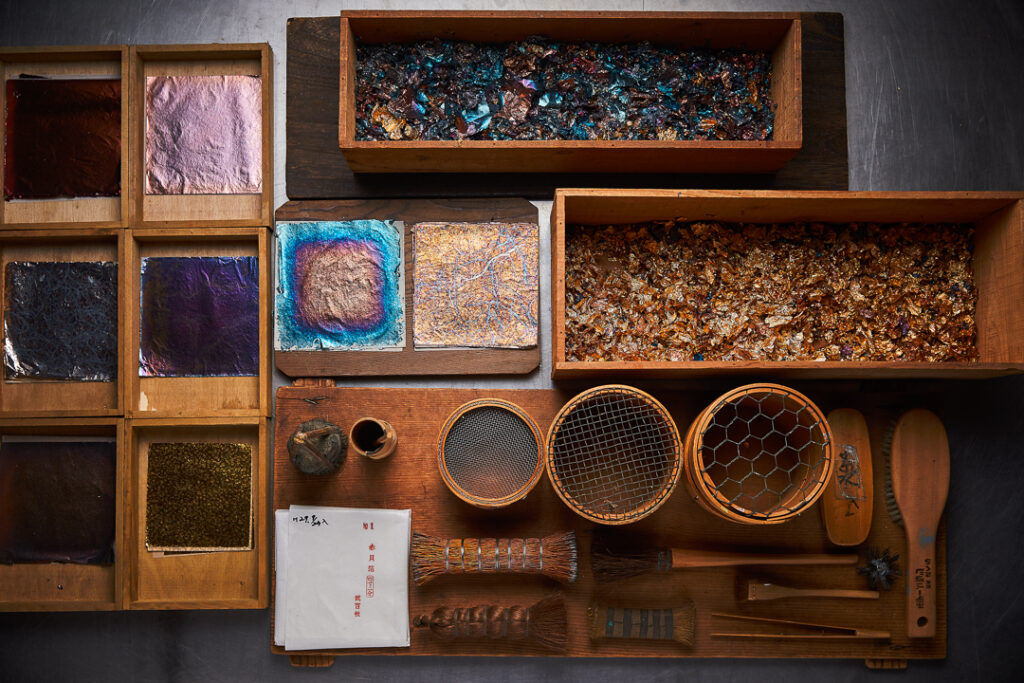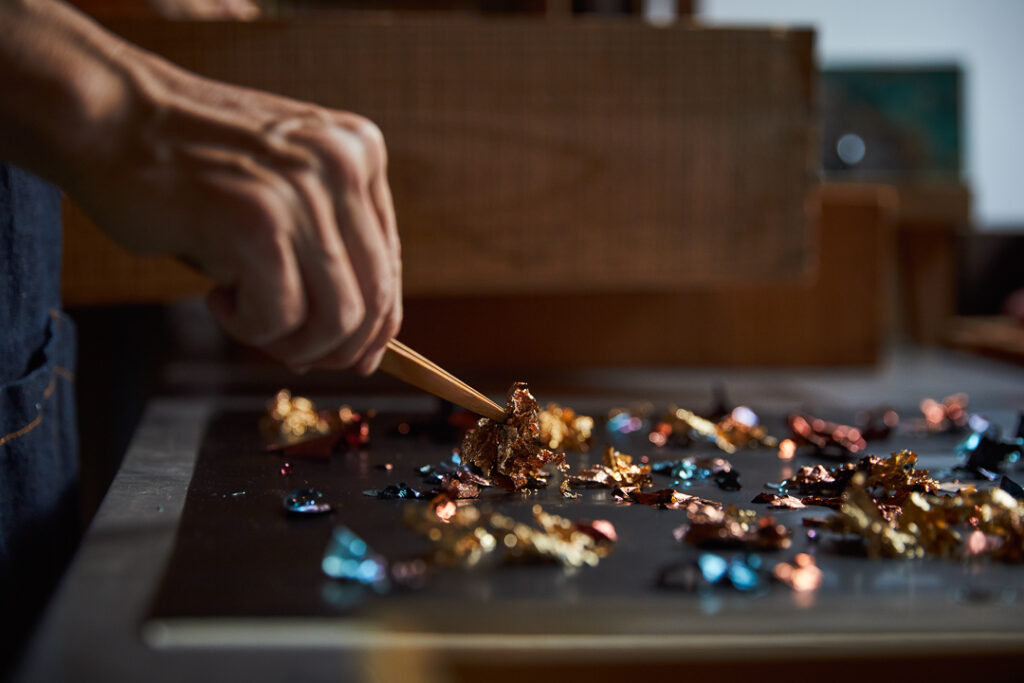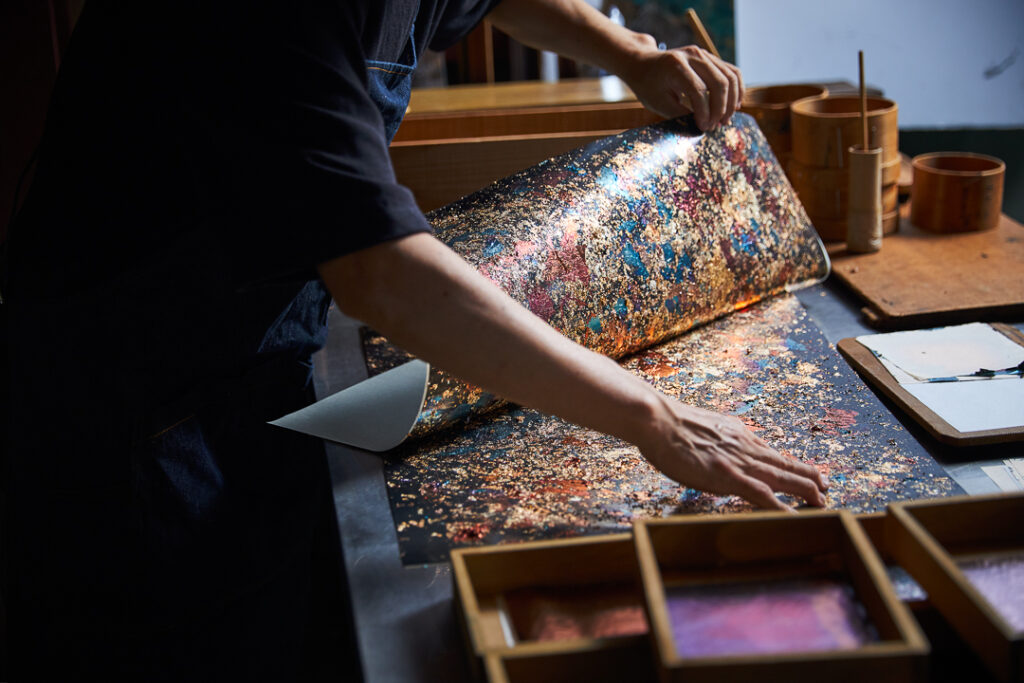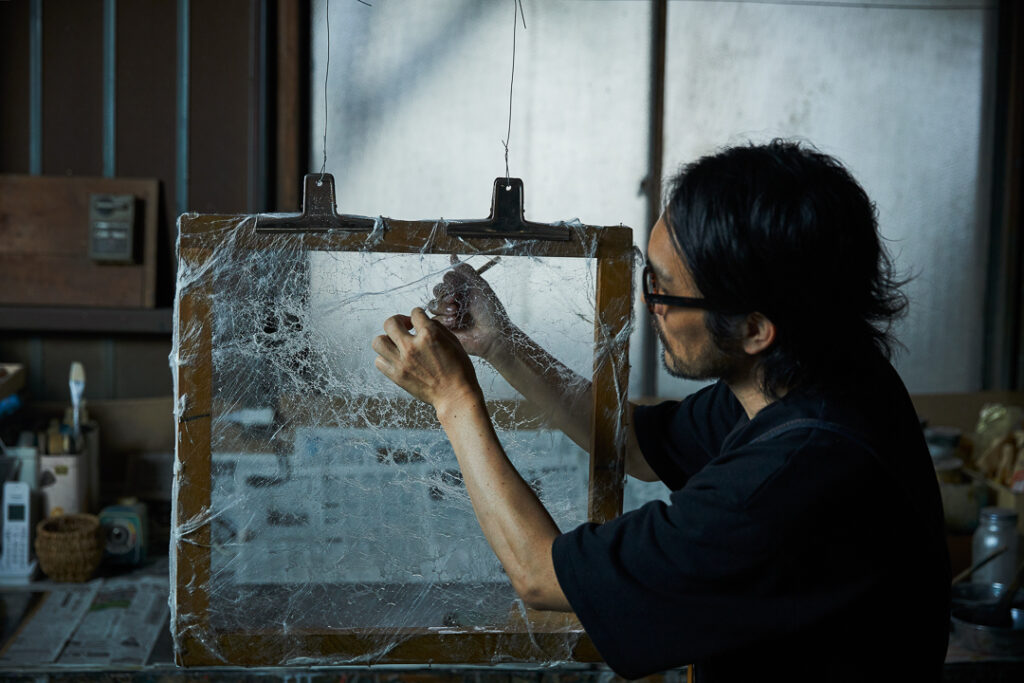Serendouce Crafts commissioned Nishijin brocade maker Kohei Murata to apply the lustrous kimono textile technique to a set of chopsticks.
It is said that the appearance of a dish influences its taste. By carefully putting together the things that surround your food, such as dishware and chopsticks, you can make your meal times an even more enjoyable experience.
The Nishijin brocade is a traditional craft whose techniques have been passed down from ancient times in Kyoto and is the emblematic textile for the obi, the Japanese kimono satchel. Nishijin silk fabric, being woven using beautiful glittering threads, boasts brilliant and gorgeous motifs on its surface. Historically, it was favoured by wealthy people such as influential samurai and wealthy merchants who ruled over large lands in Japan and received high support. The Nishijin brocade, still used in the production of diverse items in small quantities, is, even now, highly regarded worldwide.
Hikibaku is the technique of applying foil to washi (Japanese traditional paper) to make the lustrous threads of Nishijin textiles. Traditional “hikihaku” is made by applying lacquer as an adhesive to the surface of washi paper, pressing (or affixing) gold or silver foil to it and then cutting it. The design created by the foil will then enhance the brilliant beauty of the Nishijin brocade.
Serendouce Crafts developed a Kickstarter project in collaboration with Kohei Murata, a third-generation artisan at the Nishijin textile foil manufacturer “Rakugei Kobo”. Rakugei chopsticks and coaster is a product set that expresses the beauty of Japan’s four seasons. Murata is a traditional craftsman of Nishijin brocade, a craft designated as a traditional handicraft by the Minister of Economy, Trade and Industry.
Murata’s creativity and inspiration express Japan’s four beautiful seasons in the hues of these chopsticks, the utensils which best represent the Japanese dining table, with its culture of experiencing the four seasons through meals.
Kitaōji Rosanjin, a famous Japanese potter and gourmet, once said that “dishware is a kimono for food”. Dishware is like clothes that bring out the charm of a dish and brightly colour it. Each tool present on the table enriches it and gives happiness to the people around it. This level of care sustains the feeling of omotenashi (“to wholeheartedly look after guests”), and you can say that chopsticks are a part of Japanese hospitality.
✿ How did the idea of applying the Nishijin technique to chopsticks come about?
There are more than 20 processes involved in making Nishijin-ori, and Hikihaku is one of them. Changes in lifestyles threaten the survival of traditional techniques. For that reason, we want people to feel the beauty not only for the obi, but also in their daily lives. Therefore, our project decided to show the beauty of chopsticks, which are indispensable to Japanese dining tables, among the meals that are indispensable in life.
✿ How long does each chopstick take to make?
It takes about a week from the moulded wooden base to completion. One of the time-consuming processes is the process of applying lacquer to make the chopsticks durable. After the lacquer is applied, it needs to be stored in a high-humidity state called “Muro” for about a day for it to settle. It is produced by applying lacquer many times, and it takes time and effort from making the wooden base.
✿ What kinds of foil are used?
Hikihaku uses a great variety of foils, depending on what you want to express, such as pure gold, coloured foil, and silver foil which has a unique texture created by chemically changing it. Among them, the leaf made by chemically changing silver leaf is called “Yakibaku”, and it has a unique calmness. The colour changes with the passage of time, which expresses the Japanese atmosphere. At the rakugei kobo, yakibaku made by the predecessor has been stored, and such precious foil is also used.
✿ Are they suitable for eating with, or are they purely ornamental?
You can enjoy chopsticks as decorations, but I would like you to actually use them. Chopsticks are made with a focus on practicality, such as the length that is easy to hold and the shape of the tip that makes it easy to grab food. Using chopsticks will make you feel more attached to them, and choosing your favourite design according to your mood and the food of the day will enrich your daily life. We would like you to enjoy the feeling of incorporating art and fashion into your dining table without raising the threshold as a decoration.
About Serendouce
 “Serendouce” is a word created by combining the words “serendipity” (an unexpected new discovery) and “douce” (comfortable). We disseminate information about and sell traditional craftworks made by creators who preserve traditional techniques and generate new value. We mainly focus on online sales and promotion, so we don’t have a fixed store. Visit serendouce-crafts.com.
“Serendouce” is a word created by combining the words “serendipity” (an unexpected new discovery) and “douce” (comfortable). We disseminate information about and sell traditional craftworks made by creators who preserve traditional techniques and generate new value. We mainly focus on online sales and promotion, so we don’t have a fixed store. Visit serendouce-crafts.com.


